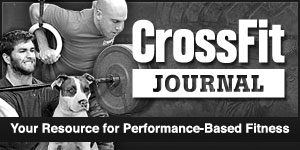Hip Flexibility Drills
V4 (VERTICAL 4)
This cornerstone HFD (Hip Flexibility Drill) Vertical postural hold depends primarily upon flexibility of the hips. Ankle flexibility comes into play as well. The idea that greater depth in this pose depends on “knee flexibility” is a common misconception. This is one of the most functional positions a human is capable of, and is the chosen resting position in much of the world. This pose can be adjusted infinitely to better serve specific demands, sports, or activities. No two V4s will be the same, as the differences in functional range of motion and strength will dictate the individual’s depth of their squat. The most important aspect of V4 is that we maintain engagement and posture, the depth of the position is of much less import. This position helps define the individual’s functional hip ROM and estabilshes the foundation for hundreds of complex movements and poses.
Focus; hip mobility and lower limb strength
Secondary Focus; maintaining postural integrity through hip functional ROM
Tertiary Focus; maintaining perfect knee path and synergistic activity through the hips through hip functional ROM
Quaternary Focus; maintaining foot pressure through hip functional ROM
Cuing;
The set up for V4 is simple in our baseline position. What follows is the baseline set up, but can be adjusted infinitely to suit specific sports, activities, strength and ability levels.
Stand tall with feet slightly wider than hip width and flat on the floor, toes forward, slightly outside of parallel to each other. Pull your shoulders down away from your ears, shoulder blades pulling toward each other, opening the chest proud. This is scapular retraction. Maintain this shoulder activity and proud chest throughout. Feel the spine stretch long contracting the abdominals, bracing as if for a punch.
While maintaining abdominal activity as well as scapular retraction, begin to engage the floor with the feet, engaging the floor laterally by trying to rip the floor apart as if stretching an elastic with the feet. This direction of engagement is to remain constant throughout the raising into and lowering out of V4. Engage your adductors by squeezing your knees toward each other, as if holding onto a balloon or ball, not allowing the knees to get narrower OR WIDER than your hips.
Feel the pressure through the inside of both feet, with more weight through the heels than in the great toes, roughly a 60/40 ratio. Begin pulling the hips down toward the heels by bending the knees.
Do not allow the lumbar to arch or round over, or the knees to drift any further apart than the starting position. Continually seek the above foot engagement with the ground. The knees can be forward of the toes, as long as one can maintain the feet flat on the floor with the 60/40 heels to toes ratio of weight distribution.
The bottom of your V4 is the spot just above where any one of the following begins to break down; proud chest so that someone in front of you could read the front of your shirt, weight distributed 60/40 heels to toes with feet nearly parallel, feet flat on the ground, knees inside feet slightly, knees squeezing as if holding onto a ball, feet ripping the floor laterally. The moment that any of these become impossible marks the end of the functional ROM for this position.
There may be shaking (that’s good!), there may be cramping. If you experience cramping, resist the urge to suddenly and forcefully extend the cramped muscle. Rather, slowly lower the hips in the exact reverse manner of the raising, maintaining the cramp as long as possible, until the hips are again on the floor, at which point the cramped muscle can be extended if the cramp persists.
V4 (VERTICAL 4)
This cornerstone HFD (Hip Flexibility Drill) Vertical postural hold depends primarily upon flexibility of the hips. Ankle flexibility comes into play as well. The idea that greater depth in this pose depends on “knee flexibility” is a common misconception. This is one of the most functional positions a human is capable of, and is the chosen resting position in much of the world. This pose can be adjusted infinitely to better serve specific demands, sports, or activities. No two V4s will be the same, as the differences in functional range of motion and strength will dictate the individual’s depth of their squat. The most important aspect of V4 is that we maintain engagement and posture, the depth of the position is of much less import. This position helps define the individual’s functional hip ROM and estabilshes the foundation for hundreds of complex movements and poses.
Focus; hip mobility and lower limb strength
Secondary Focus; maintaining postural integrity through hip functional ROM
Tertiary Focus; maintaining perfect knee path and synergistic activity through the hips through hip functional ROM
Quaternary Focus; maintaining foot pressure through hip functional ROM
Cuing;
The set up for V4 is simple in our baseline position. What follows is the baseline set up, but can be adjusted infinitely to suit specific sports, activities, strength and ability levels.
Stand tall with feet slightly wider than hip width and flat on the floor, toes forward, slightly outside of parallel to each other. Pull your shoulders down away from your ears, shoulder blades pulling toward each other, opening the chest proud. This is scapular retraction. Maintain this shoulder activity and proud chest throughout. Feel the spine stretch long contracting the abdominals, bracing as if for a punch.
While maintaining abdominal activity as well as scapular retraction, begin to engage the floor with the feet, engaging the floor laterally by trying to rip the floor apart as if stretching an elastic with the feet. This direction of engagement is to remain constant throughout the raising into and lowering out of V4. Engage your adductors by squeezing your knees toward each other, as if holding onto a balloon or ball, not allowing the knees to get narrower OR WIDER than your hips.
Feel the pressure through the inside of both feet, with more weight through the heels than in the great toes, roughly a 60/40 ratio. Begin pulling the hips down toward the heels by bending the knees.
Do not allow the lumbar to arch or round over, or the knees to drift any further apart than the starting position. Continually seek the above foot engagement with the ground. The knees can be forward of the toes, as long as one can maintain the feet flat on the floor with the 60/40 heels to toes ratio of weight distribution.
The bottom of your V4 is the spot just above where any one of the following begins to break down; proud chest so that someone in front of you could read the front of your shirt, weight distributed 60/40 heels to toes with feet nearly parallel, feet flat on the ground, knees inside feet slightly, knees squeezing as if holding onto a ball, feet ripping the floor laterally. The moment that any of these become impossible marks the end of the functional ROM for this position.
There may be shaking (that’s good!), there may be cramping. If you experience cramping, resist the urge to suddenly and forcefully extend the cramped muscle. Rather, slowly lower the hips in the exact reverse manner of the raising, maintaining the cramp as long as possible, until the hips are again on the floor, at which point the cramped muscle can be extended if the cramp persists.
Change your life!. Sign Up Today for a free trial.


